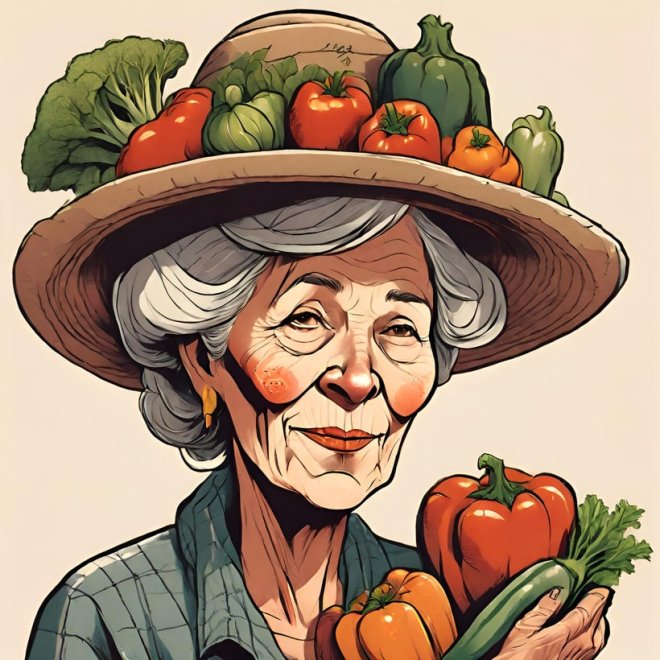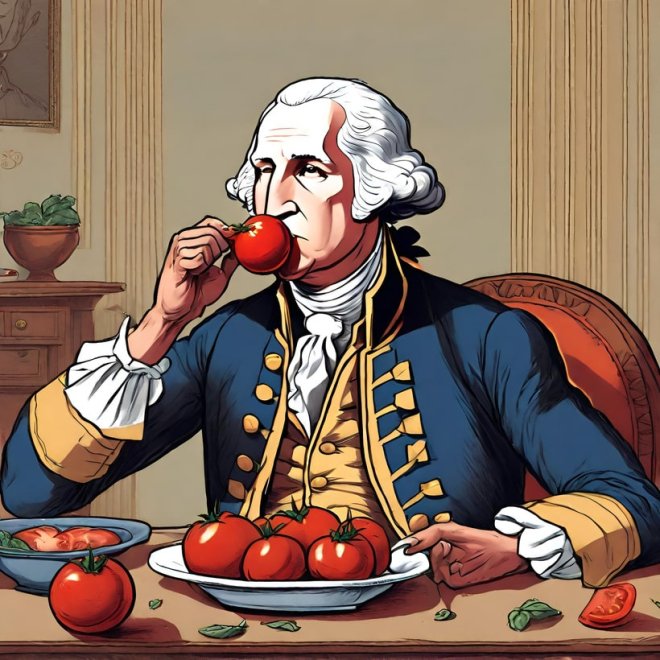Read by Michael Flamel

Once upon a time, in a small village nestled deep within the heart of the American colonies, there was a rather eccentric group of folks. They called themselves the “Revolutionary Victory Gardeners.” Now, this wasn’t your typical band of revolutionaries. They didn’t wield muskets or draft fiery declarations. No, their weapons of choice were seeds, shovels, and an unwavering determination to grow the biggest, juiciest vegetables in the land.
The year was 1776, and the American Revolution was in full swing. While others were busy planning strategies and skirmishes, our quirky gardeners had a different idea: they decided to plant a “Revolutionary Victory Garden.” It wasn’t just any garden; it was a garden that would feed the hungry soldiers and inspire the spirit of resistance against British rule.
The group was led by two unlikely comrades: Mildred, a feisty grandmother with a penchant for witty one-liners, and Harold, a lanky young man with an uncanny ability to make weeds disappear. Together, they rallied the townsfolk to join their gardening crusade.
Now, imagine this motley crew of revolutionaries, each with a garden tool in hand, standing in the village square, ready to dig into the unknown. Mildred, wearing a sunhat adorned with faux vegetables, addressed the group, “Ladies and gentlemen, we’re here to plant the seeds of liberty!” She paused for dramatic effect, holding up a carrot seed packet. “But first, let’s plant these carrot seeds.”

As the gardening adventure unfolded, it quickly became clear that this group had as much gardening experience as a cat had in barking. They dug holes too deep, planted too many seeds too close together, and even watered the pathways instead of the plants. But did they let that dampen their spirits? Not a chance!
Harold, trying to motivate his fellow gardeners, said, “Folks, remember that the Boston Tea Party wasn’t perfect either. It had a few, um, soggy moments.” The villagers burst into laughter, their camaraderie growing stronger with each misstep.
Over time, the Revolutionary Victory Gardeners learned not only about gardening but also about the strength of unity. Neighbors who had never spoken before were now sharing tips on how to outwit the pesky cabbage worms. Young and old, rich and poor, they all worked side by side, united in their shared purpose.
As the seasons passed, their garden flourished, and so did their spirits. Zucchinis grew to epic proportions, tomatoes blushed a deep red, and corn stalks reached for the sky. Word of their bountiful harvest spread, and even General Washington himself heard about the Revolutionary Victory Garden. He visited the village, tasted their vegetables, and was so impressed that he declared their garden an inspiration to the entire revolution.

In the end, the British might have had a powerful army, but the villagers of this small community had something equally formidable: unity, humor, and the indomitable spirit of resistance. Their Revolutionary Victory Garden became a symbol of hope and resilience during those trying times.
And so, dear reader, the lesson here is clear: Unity can indeed triumph over any adversity, even if it means waging a battle against stubborn turnips and mischievous cucumbers. In the end, it’s not always the size of the army but the size of the heart and the willingness to come together that truly counts in the pursuit of victory. ❖


 Previous
Previous

